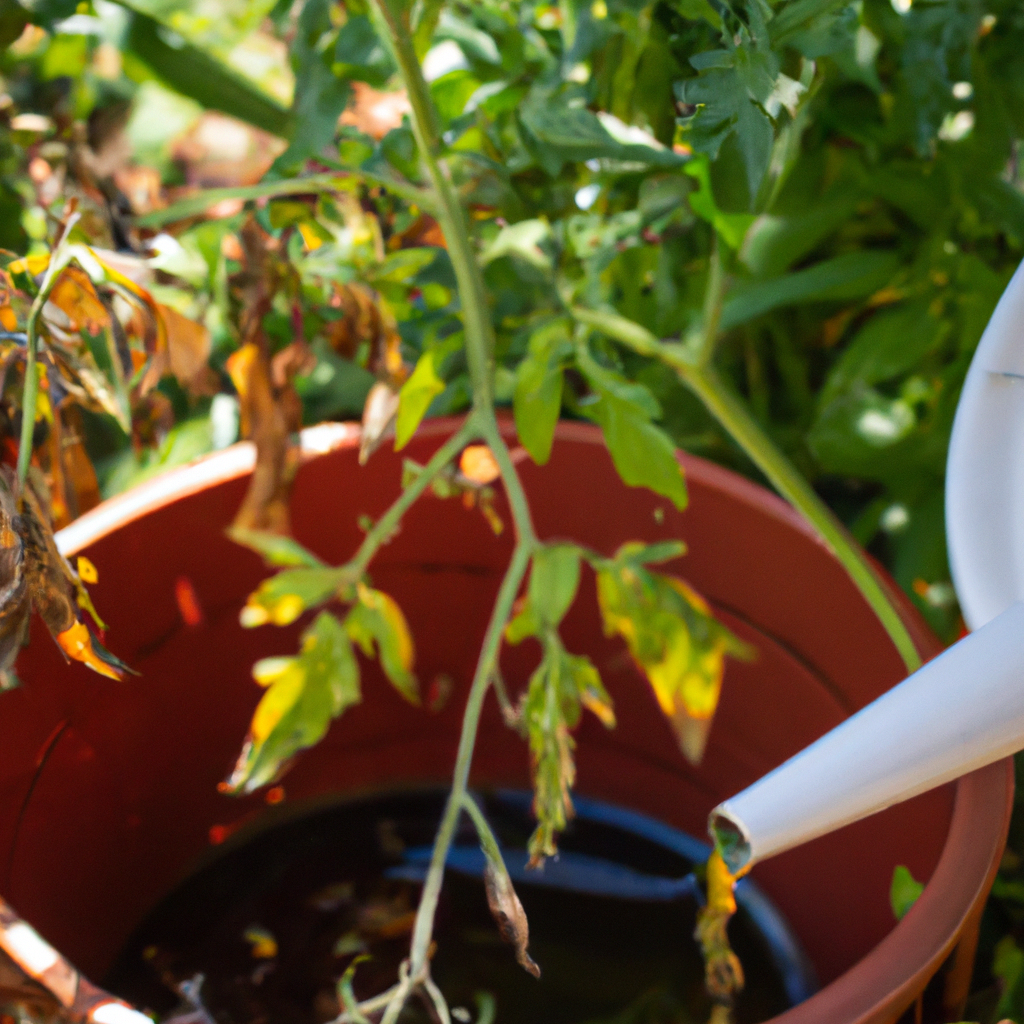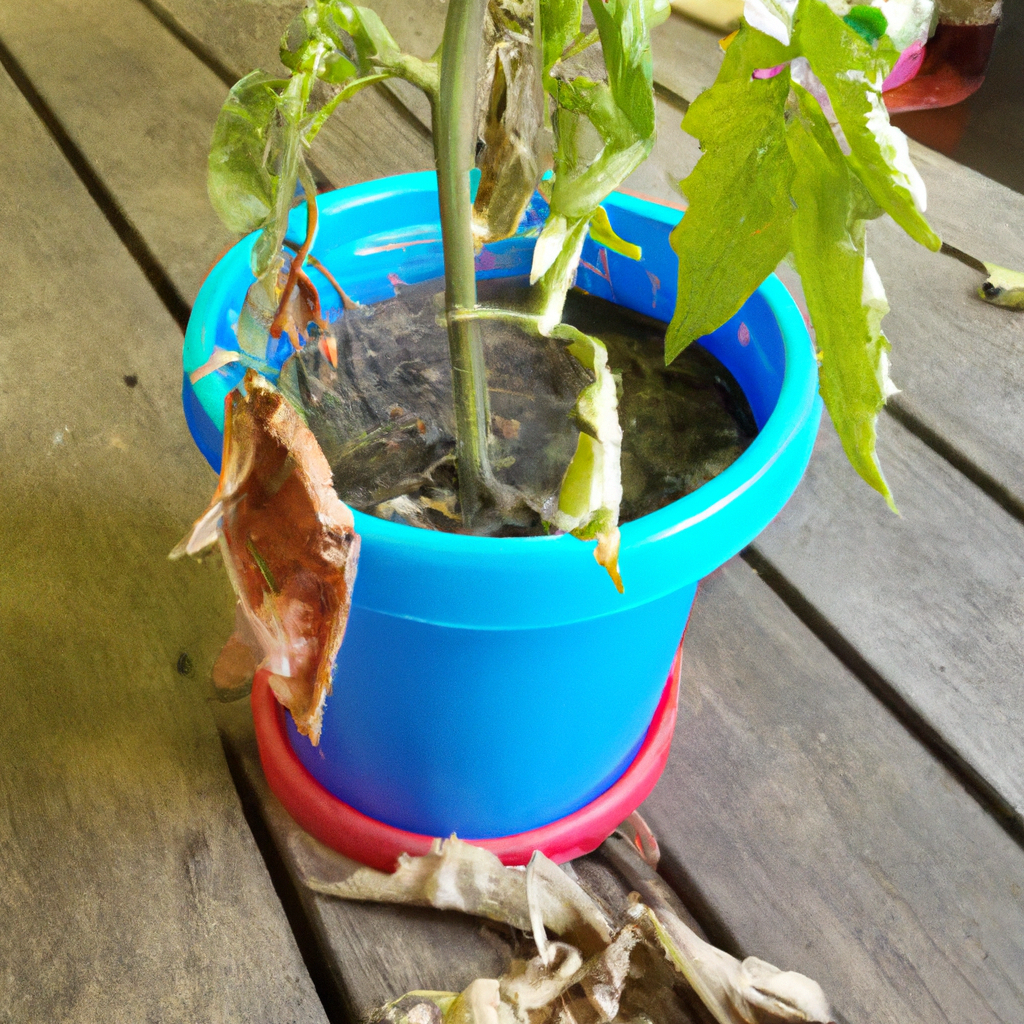Tomato plants are one of the most popular vegetables to grow in the garden, and when they’re not doing well, it can be really discouraging. If you’ve noticed your tomato plants are wilting, discolored, or have stunted growth, it’s time to take action. Knowing how to save a dying tomato plant is an essential part of gardening, and I’m here to help!
In this article, I’ll discuss the causes of tomato plant death and the steps you can take to save your tomato plants. I’ll also provide practical advice on how to save a dying tomato plant and keep it healthy and thriving. With a little effort, you can get your tomato plants back on track and enjoy your homegrown veggies.

Symptoms of a Dying Tomato Plant
Moving on from the causes of a dying tomato plant, let’s take a look at some of the signs that indicate your tomato plant is in trouble. As a gardener, it’s important to recognize the symptoms of a dying tomato plant as soon as possible, so you can take the necessary steps to save it.
One of the key symptoms of a sick tomato plant is yellowing or wilting leaves. If the leaves are becoming yellow or droopy, it likely means the plant isn’t getting enough water or nutrients. Additionally, if the leaves are turning brown and curling up, this could be an indication of disease.
Fungal diseases can be another sign your tomato plant is in trouble. If the leaves appear to be covered in white powder, this could be a sign of powdery mildew. This can easily spread, so it’s important to take action quickly and remove the affected leaves.
Tomato plants that aren’t getting enough sun will also struggle to thrive.
Why Is My Tomato Plant Dying
Oh no, my tomato plant is dying! It’s normal to face some issues like watering issues, nutrient deficiencies, pests, diseases, and even over-pruning when gardening. To save my tomato plant, I first need to make sure it’s getting the right amount of water. If there’s too much or too little, it can cause issues. Next, I’ll check for nutrient deficiencies and make sure the soil has the right balance. Pests and diseases can also be a problem, so I’ll be sure to inspect the plant for any signs of damage.
Watering Issues
It’s heartbreaking to see a tomato plant that appears to be on its last legs. But don’t give up on your plant yet! The first thing to check is the watering. Over-watering or under-watering can both be deadly to a tomato plant. To save your plant, you’ll need to figure out how much water it needs.
To determine the ideal amount of water, start by feeling the soil. If the soil is still damp a few inches below the surface, there’s no need to water. If the soil feels dry, water your plant deeply and evenly. Make sure the water is draining away from the plant and not pooling around it, and don’t forget to check the soil again a few days later.
Nutrient Deficiencies
Now that we’ve identified the symptoms of a dying tomato plant, let’s take a look at why your tomato plant may be dying. One of the most common causes of death in tomato plants is nutrient deficiencies. Without enough of the right nutrients, your plant won’t be able to grow or thrive. Knowing how to save a dying tomato plant begins with understanding what nutrients it needs. If your tomato plant has yellow leaves or stunted growth, it may be missing essential macro- and micronutrients. You’ll need to fertilize your plant using a balanced fertilizer that contains nitrogen, phosphorus, and potassium. Additionally, look into adding specific trace elements such as calcium, boron, copper, iron, manganese, magnesium, and zinc.
Pests
Now that we’ve gone over the symptoms of a dying tomato plant, let’s look at why your tomato plant might be dying in the first place. One of the most common causes of tomato plant death is pests. Pests like aphids, spider mites, and tomato hornworms can cause significant damage to your tomato plants. Left unchecked, they can suck the life out of the plant and leave it looking wilted and lifeless. But don’t worry, if you act fast, you can still save your tomato plant!
To prevent pests from killing your tomato plant, start by regularly checking the leaves and stems for signs of infestation. If you spot any pests, take action immediately. Try using a natural insecticide or introducing beneficial insects like ladybugs to the area.
Diseases
It’s heartbreaking to see your tomato plant struggling, and you’re probably wondering how to save it. Unfortunately, diseases can be one of the main contributing factors to tomato plant death. Bacterial and fungal diseases like blight, fusarium wilt, and verticillium wilt can attack your plant, causing wilting, yellowing, and even death. To save a dying tomato plant, it’s important to identify the disease, then take the necessary steps to treat it. Make sure to keep your tomato plant free of weeds, as these can harbor diseases and spread them to your tomato plant. If your tomato plant has any signs of disease, remove and dispose of any affected leaves and stems. You can also use a natural fungicide to help prevent the spread of the disease.
Over-Pruning
Now that we’ve gone over the symptoms of a dying tomato plant, let’s figure out why it’s dying in the first place. One of the biggest causes of tomato plant death is over-pruning. If you prune the plant too much, you can damage the stems and leaves, leading to quick death. To prevent this, it’s important to understand how and when to prune your tomato plant. First, don’t prune the leaves and stems that are healthy and growing. Second, prune only the leaves and stems that are dead or wilted, as these can inhibit healthy growth. Finally, prune the plant sparingly, as it affects the plant’s ability to absorb nutrients and water.

How to Revive a Dying Tomato Plant
Fortunately, there is still hope for your tomato plant! With the right care and attention, you can revive a dying tomato plant and get it back to its once healthy state. To begin, it’s important to understand the cause of the tomato plant’s death. Common causes of wilting or dying tomato plants include inadequate watering, lack of nutrients, disease, or pests.
Once the cause is identified, the next step is to create a plan of action to revive the tomato plant. If the cause is lack of water, increase the frequency and amount of water. If the cause is lack of nutrients, add organic compost or fertilizer to the plants soil. If the plant is diseased, use a fungicide to treat the plant. If the cause is pests, use an insecticide to eradicate them.
Finally, the tomato plant needs a consistent source of light and water, so make sure to check on the plant regularly. Depending on the severity of the plant’s condition, it may take a few weeks to a few months for the tomato plant to recover.
Transplanting a Dying Tomato Plant
When it comes to reviving a dying tomato plant, sometimes the best thing you can do is start over – and that means transplanting. Although it may seem like a daunting task, it can be an effective way to give your tomato plant a second chance at life.
When transplanting a dying tomato plant, you’ll want to take a few key steps. First, choose a pot that is 1-2 inches larger than the current pot. This will give your tomato plant the space it needs to continue to grow. Secondly, fill the pot with a nutrient-rich soil mix that will provide your tomato plant with the nourishment it needs to thrive. Finally, gently remove the dying tomato plant from its original pot and carefully place it into the new one, making sure to pat the soil down so that the plant is secure.
Once you’ve transplanted the dying tomato plant, it’s important to keep an eye on it and give it the additional care it needs to revive.
Practical Tips for Thriving Tomatoes
Now that you know how to save a dying tomato plant, let’s look at some practical tips for thriving tomatoes! First, make sure to plant your tomatoes in a sunny spot with well-draining soil and plenty of nutrients. Tomatoes love warm weather, so if you can, try to choose a spot that gets plenty of direct sunlight. Secondly, water your tomatoes regularly, but don’t over-water them. The soil should be kept moist but not soggy.
Thirdly, fertilize your tomatoes with a balanced fertilizer. This will help provide the necessary nutrients for healthy growth. Finally, make sure to prune the tomato plants to promote healthy growth. Pruning the branches will help keep the plants healthy and will also help increase the yield of tomatoes. Following these simple steps will ensure that your tomatoes will thrive and produce delicious, juicy tomatoes!

